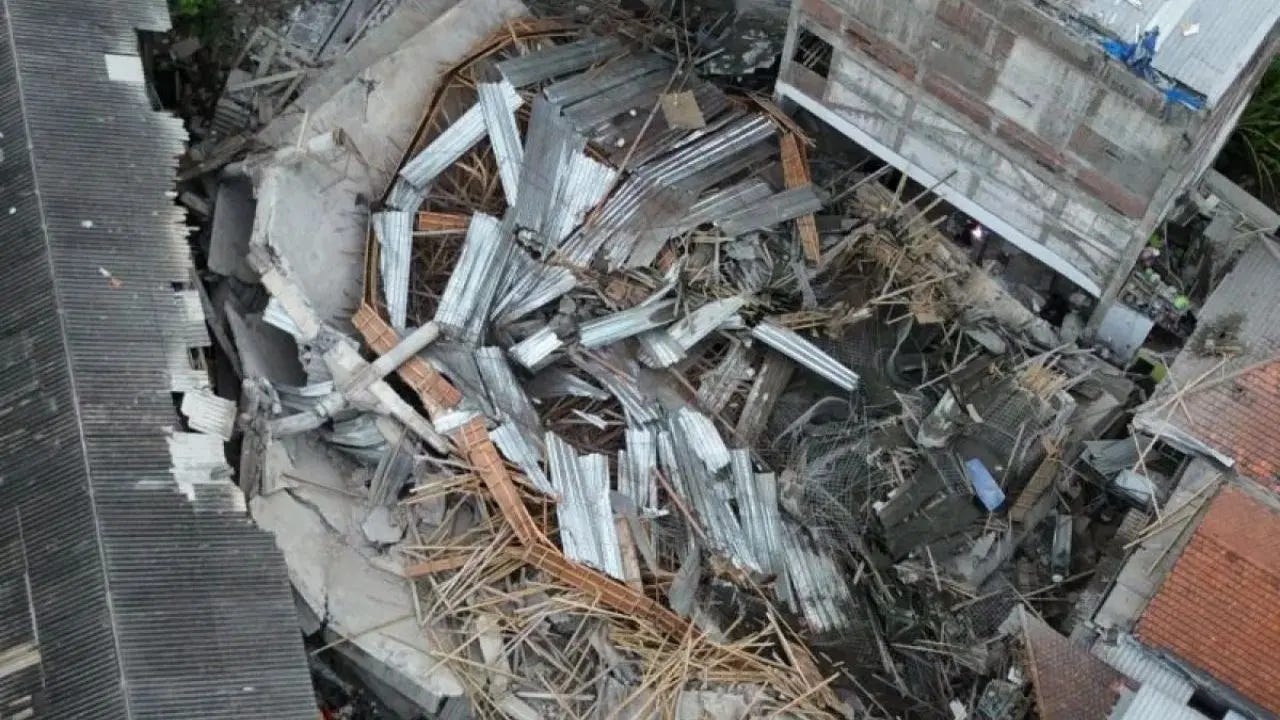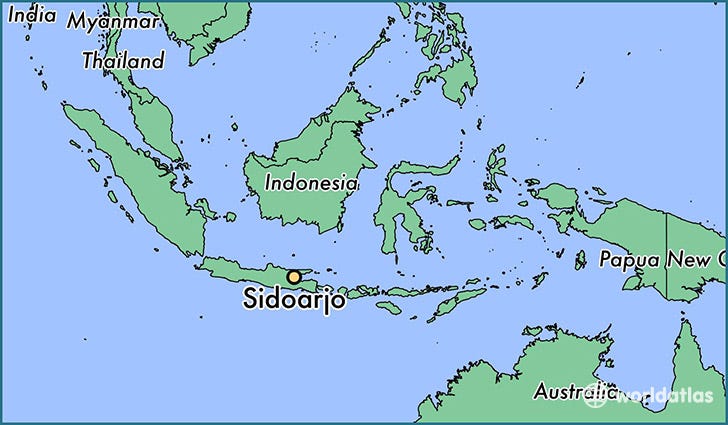An Islamic Boarding School and the Perilous State of Education in Indonesia
School’s collapse lays bare inadequate building standards, accommodating attitudes
By: Ainur Rohmah
At about 3 pm on September 29, a three-story prayer hall suddenly crumbled as hundreds of students were engaged in their communal prayers at the Al-Khoziny Pondok Pesantren in Sidoarjo, a 2 million-population city 800 km southeast of Jakarta, burying 171 students and resulting in at least 67 deaths and casting into a harsh and tragic light the enduring presence of Pondok Pesantren, a traditional Islamic boarding school system with more than 40,000 such schools scattered across the archipelago.
The building in question was reportedly built without an official permit, without technical planning from qualified experts, and without meeting minimum safety standards. Students allegedly were involved in the construction process, such as in pouring concrete—a common practice in traditional Islamic boarding schools.
The Pondok Pesantren educates millions of students, representing a significant but relatively small portion of Indonesia’s education system, accounting for about 10 percent of all schools and about 15 percent of primary and secondary students. While some follow government curricula, many remain independent. The tragedy has thus once again exposed the profound fragility of community-based educational infrastructure in many regions, laying bare systemic weaknesses in curriculum, funding, and infrastructure.
State funding for the construction of safe facilities across the pesantren system remains minimal. Based on Ministry of Religious Affairs data, this year alone, of thousands of schools, fewer than 100 have received assistance for facilities and infrastructure. Budgetary limitations force the majority to rely on self-funded community contributions, which are often small, thereby exacerbating their fragile position in supporting operational needs.
Indonesia’s Coordinating Minister for Human Development and Cultural Affairs, Muhaimin Iskandar, noted that most older pesantren “possess very aged buildings that were not accompanied by adequate planning.” He identified limited budgets, the advanced age of the structures, and the pesantren’s desire to maintain their independence as the three primary factors rendering many school buildings susceptible to collapse. There is no specific model or standardized blueprint for physical construction. Consequently, the construction of additional buildings is often a matter of mere improvisation.
The Minister of Religious Affairs, Nasaruddin Umar, stated that a significant portion of the public entrusts their children to pesantren, hoping they will be shielded from drugs and promiscuity. Despite this, Nasaruddin acknowledged that as private institutions, they operate under severe budgetary constraints, which often prevent them from providing adequate facilities and infrastructure.
Many of the families of the victims have displayed divergent attitudes in the wake of the disaster, framing the event as an act of fate rather than a result of negligence, a narrative that appears to align with the position of the caretaker Abdus Salam Mujib, who called it “the destiny ordained by Allah. Therefore, everyone must be patient and, God willing, be granted a better replacement by Allah.” He offered an apology to the students’ guardians.
Many observers argue that Mujib’s characterization of the tragedy as destiny is not merely an evasion of responsibility, but also a form of manipulation of public religious belief, intended to foster acceptance of death as something that should not be questioned.
Urgent Need for Overhaul
Since as early as the 14th century AD, concurrent with the Islamization of the Indonesian archipelago, pesantren have existed as Islamic educational institutions, enduring to the present day. The majority of Islamic scholars and clerics, or ulama and kiai, received their education within the system, studying the Holy Quran and the classical kitab kuning (yellow books) authored by scholars of previous eras.
Despite their challenges, pesantren occupy a position of near-inviolability within society. In many traditional boarding schools, a unique culture thrives, centered on the concept of takzim, or politeness and respect, particularly toward one’s elders and teachers. According to linguist W. J. S. Poerwadarminta, takzim is interpreted as decorum and reverence that a student must show, an attitude of honoring and respecting their teachers. Typically, students residing in traditional pesantren live without access to mobile phones and cannot leave the premises easily.
In practical terms, this manifests as not interrupting when a teacher is speaking, lowering one’s head when speaking to a teacher, and safeguarding the teacher’s reputation, among other behaviors. The imperative for takzim toward the kyai is taught in several kitab kuning studied by the students, such as Ta’limul Muta’alim by Imam Az-Zarnuji and Ihya Ulumuddin by Imam al-Ghazali.
Students accept the leadership of the kiai based on their belief in the concept of barokah (blessing). Santri view their kiai as a continuation of the lineage of ulama, inheritors of knowledge from the golden age of Islam. Indeed, the genealogical chains of some major kiai are often considered significant, supposedly tracing back to the Prophet Muhammad himself. Students consistently regard the kyai as an absolute figure who must be revered, believed to possess a supernatural force that can bring good fortune.
Because of this dynamic, according to Poerwadarminta, attitudes can transform into calamity when exercised excessively or misunderstood. In numerous instances across Indonesia, blind allegiance to religious figures, officials, or public personalities has made the populace reluctant to offer criticism, even when they are aware of egregious errors.
An Educational Divide
Dzuriyatun Toyibah, a lecturer of the Faculty of Social and Political Sciences at the State Islamic University (UIN) in Jakarta, explained that traditional pesantren, which serve as learning centers for impoverished communities, have long received insufficient attention from the state, resulting in a failure to meet decent educational facility standards. The Al-Khoziny case, she said, is not solely the fault of the pesantren but also represents a form of state neglect in developing pesantren into proper educational institutions.
“There is an element of government responsibility because education, which aims to enlighten the life of the nation, is the government’s responsibility. The existence of community contributions in education does not absolve the government of its obligation,” Dzuriyatun said.
According to a report from the Centre for Indonesian Policy Studies (CIPS), government-provided School Operational Assistance (BOS) funds cover only approximately 7 percent of a pesantren’s budgetary needs. The remainder, over 90 percent, is borne directly by the students, donors, and the pesantren’s leaders themselves.
This situation creates a significant disparity. Larger, more established pesantren can typically rely on higher fees from students’ guardians. Conversely, smaller pesantren are often reluctant to overburden parents and thus depend on donations, grants, or sporadic aid from benefactors. This precarious financial state forces many small pesantren to construct facilities on a makeshift, ad-hoc basis.
In the aftermath of the boarding school collapse, Coordinating Minister for Human Development and Cultural Affairs Muhaimin Iskandar announced that the government would audit older pesantren, particularly those aged between 100 and 200 years, prioritizing plans to renovate “vulnerable” schools.



Religion is the curse that never stops holding back humanity...